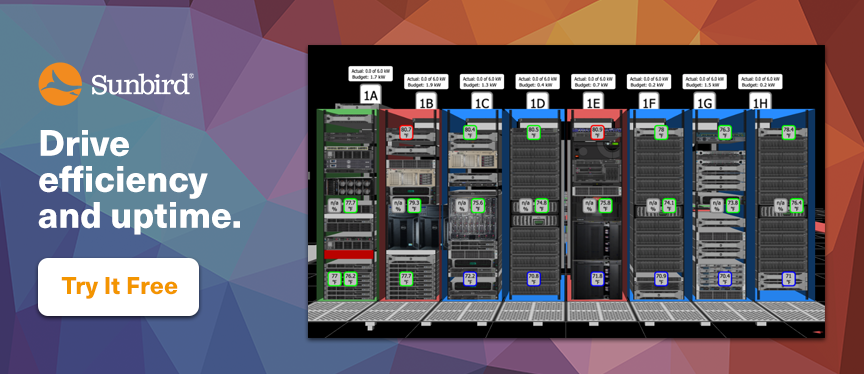What is Cloud Repatriation?
Are data center managers reversing their cloud strategy?
Cloud repatriation is the process of migrating applications, data, and workloads from a public cloud environment to on-premise infrastructure, and it’s becoming a popular data center trend.
According to IDC, 70-80% of companies are repatriating at least some of their data each year.
What is driving cloud repatriation?
There are a variety of reasons why cloud repatriation may be an attractive option:
- Cost concerns. Many organizations initially moved to the cloud for its scalability and pay-as-you-go pricing model. Now, as demand increases, the rising cost to run certain workloads no longer justifies the use of cloud services. Cost was the main driver of Dropbox moving off of AWS, saving them $75 million over two years.
- Performance and latency issues. The data transfer and processing delays of the public cloud can impact applications that require low latency and high performance.
- Data governance and compliance. Organizations in highly regulated industries or regions with strict data sovereignty laws may require greater control of their data.
- Security concerns. Companies with strict security requirements are often better suited with on-premise infrastructure.
- Changing business needs. IT requirements change as businesses evolve. Organizations are reassessing their strategies and adjusting their infrastructure accordingly.
How to know if cloud repatriation is right for you
If you are considering migrating from the public cloud, here are some tips to help understand if it’s the right move for your organization.
- Assess your strategy. A thorough evaluation should begin with understanding the initial reasons that led your organization to migrate to the cloud in the first place. Identify the primary drivers (e.g., reducing operating costs or achieving scalability) and determine how successful your cloud deployment was. Next, pinpoint your current pain points and long-term goals and scalability requirements and consider if the public cloud is still the best fit.
- Understand the challenges. Perform a comprehensive assessment of the potential obstacles and complexities associated with a cloud repatriation. Key challenges may include a time-consuming and resource-intensive data migration, application and workload compatibility issues that must be addressed, provisioning on-premise infrastructure to handle the new workloads, data security complexities, overall cost considerations, contractual obligations to your cloud provider, an in-house skills gap, potential downtime, and limited flexibility. Consider how you would prepare to proactively address your unique challenges to mitigate risk and contain costs.
- Weigh the pros and cons. Assess the trade-offs you are likely to encounter if you move forward with cloud repatriation. Consider the positive and negative outcomes of switching from a public cloud to a private cloud for cost, performance, data security, compliance, flexibility, and scalability. A balanced consideration of these factors will lead to an informed decision about the best step forward for your organization.
Tips for a successful cloud repatriation
Follow these best practices to have a successful migration.
- Know your options. If you choose to proceed with a cloud repatriation, it’s critical to consider all the potential strategies to determine which one best aligns your goals. One option is adopting a hybrid environment in which certain workloads and data remain in the public cloud while others are brought back on-premise or in colocation data centers. This common approach allows organizations to leverage the benefits of different environments based on which is most appropriate for a given workload. You should also consider if a phased approach to cloud repatriation is beneficial. By gradually migrating workloads and applications, you can mitigate risk and minimize disruptions.
- Have a plan. A successful cloud repatriation needs a well-defined roadmap. Assess all your workloads, applications, and data to determine what should be repatriated and what should remain in the private cloud. This ensures that the project aligns with your business objectives and resolves specific pain points. Next, build a migration plan with clear timelines, milestones, and project owners to ensure an organized transition. The plan should outline the sequencing of the migration, detail how workloads will be repatriated, and include contingency plans and testing procedures to avoid a failed migration. Communicate and collaborate with key stakeholders and teams often to foster support, address concerns, and ensure that all perspectives are considered. Transparency about the rationale, objectives, and expected outcomes of the repatriation project helps build trust and cooperation across teams.
- Identify the right time. Timing the migration is crucial. Consider factors like contract renewal periods with cloud providers, availability of resources, customer demand, and business cycles to determine what timeframe makes the most sense to minimize disruptions. Once you have the timing, overlay that into your migration plan.
- Mitigate risks. Thoroughly test and validate your migration plan to identify and address any potential issues or gaps. By conducting trial migrations and simulations, you can earn your stakeholders’ confidence in the plan. Implement robust backup and disaster recovery measures during the transition to safeguard against data loss and minimize downtime in the event of an unforeseen problem. Prepare for potential challenges and proactively develop fallback strategies and contingency plans.
How to drive efficiency and uptime during your cloud repatriation
Data Center Infrastructure Management (DCIM) software should play a crucial role in driving efficiency and uptime during your cloud repatriation. By providing real-time visibility and monitoring, DCIM software empowers you to optimize the data center infrastructure supporting your private cloud.
During the repatriation process, you can use DCIM software to identify underutilized resources for migrated workloads to get the most out of your existing facilities. Proactive data center capacity planning ensures your on-premise environment can accommodate the migrated workloads without compromising uptime.
Modern DCIM software helps you drive energy efficiency by avoiding overcooling, tracking energy KPIs like Power Usage Effectiveness (PUE), and simplifying server virtualization. By integrating DCIM with VMware, you can map your virtual machines to their physical hosts and use this information to move your VMs to your most energy efficient servers, reducing hardware and energy costs.
DCIM software plays a pivotal role in risk mitigation during cloud repatriation. By continuously monitoring your critical infrastructure, DCIM software helps you identify potential issues and proactively resolve them before they lead to downtime.
With DCIM software, you can gain actionable insights and proactive data center management that helps simplify your migration, supports your organization’s long-term goals, and provides a solid foundation for efficient and reliable data center operations.
Bringing It All Together
Cloud repatriation is an emerging trend where organizations are strategically migrating workloads, applications, and data from the public cloud back to on-premise infrastructure. Making the decision to repatriate requires a thorough assessment of your existing cloud strategy, challenges, and potential benefits of migrating. A well-defined migration plan and a proactive approach to risk mitigation are crucial for a successful repatriation.
DCIM software plays a critical role in driving efficiency and uptime during cloud repatriation. With real-time visibility and monitoring capabilities, DCIM software empowers organizations to optimize their data center infrastructure, proactively respond to potential issues, and increase energy efficiency.
Ready to see how Sunbird’s leading DCIM software simplifies your cloud repatriation? Get your free test drive now!






























